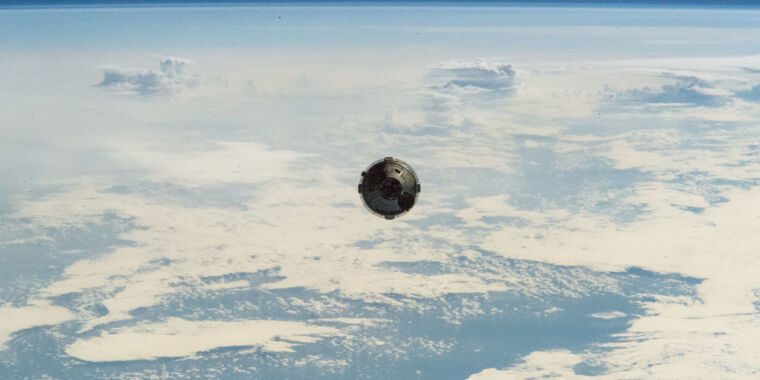Before Boeing’s Starliner spacecraft gets the green light to depart the International Space Station for its journey to Earth, NASA administrators want to see if the spacecraft’s troubled control thrusters can help guide the spacecraft’s two-person crew toward Earth.
The two astronauts who launched June 5 on the first manned test flight of the Starliner spacecraft agree with the managers’ sentiments, but said Wednesday they would be comfortable returning the capsule to Earth in the event of an emergency that would require an evacuation of the space station.
Five of the 28 Reaction Control System thrusters in Starliner’s service module went offline last month as the spacecraft approached the space station. Starliner’s flight software disabled the five control jets when they overheated and began to lose thrust. Four of the thrusters later recovered, but some did not reach full power levels as Starliner approached to dock. In mid-June, Starliner astronauts hot-fired the thrusters again, and thrust levels have returned to closer to normal.
“What we want to know is, do the thrusters work? Whatever percentage of thrust they have, we can put them together in a package that can do a deorbit burn,” said NASA astronaut Suni Williams, Starliner pilot. “That’s the main objective we’re looking for. [for] The service module is here to help us execute the de-orbit burn so we can return home.”
These small thrusters aren’t needed for the de-orbit burn itself, which uses a separate set of engines to slow Starliner down and propel it out of orbit for landing, but Starliner needs to have enough control jets running to steer it in the right direction for the de-orbit burn.
After years of delays and setbacks, the test flight will mark the first time astronauts will fly into space aboard Boeing’s Starliner spacecraft. Starliner is NASA’s second crewed commercial spacecraft, joining SpaceX’s Crew Dragon in a rotation of missions ferrying astronauts to and from the space station over the next decade.
But first, Boeing and NASA must safely complete Starliner’s test flights and resolve thruster issues and helium leaks plaguing the spacecraft before moving forward with operational crew change missions. With the Crew Dragon spacecraft currently docked at the station, NASA’s commercial crew program manager, Steve Stich, told reporters on Wednesday that as of now, Williams and Starliner commander Butch Wilmore are scheduled to return aboard Starliner.
“The beauty of the Commercial Crew Program is we have two vehicles, two different systems that we can use to bring our crew home,” Stich said, “so it will take us a little bit more time to look at the data and determine if we need to do something different. But our top option right now is to bring Butch and Suni home on Starliner. At this point, we don’t see any reason not to do that.”
Mark Nappi, Boeing’s Starliner program manager, said officials have taken more than 30 steps to investigate five “minor” helium leaks and a thruster malfunction in Starliner’s service module. “All of these items are expected to be completed by the end of next week,” Nappi said.
“This is a test flight, this is the first flight with a crew on board, we’re just trying to take a little extra time to make sure we understand everything before we make the decision to deorbit,” Stich said.


